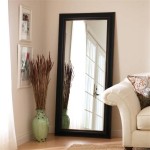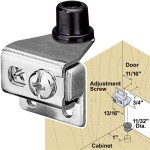French Art Deco Mirror Antique: A Reflection of Elegance and Era
French Art Deco mirrors represent a significant segment of the antique market, prized for their exquisite craftsmanship, geometric designs, and the evocative glimpse they offer into the glamorous 1920s and 1930s. These mirrors are more than mere reflective surfaces; they are works of art that embody the spirit of a dynamic period in design history.
The Art Deco movement, flourishing between the two World Wars, embraced modernism with a focus on geometric shapes, streamlined forms, and rich ornamentation. Influenced by Cubism, Fauvism, and ancient Egyptian art, Art Deco designers sought to create luxurious and visually striking objects for a modern age. This aesthetic translated beautifully into the creation of mirrors, which became essential decorative elements in fashionable homes and public spaces.
French artisans were particularly adept at capturing the essence of Art Deco. Their mirrors often featured high-quality materials, such as etched or frosted glass, beveled edges, and frames crafted from exotic woods like ebony and macassar, or metals like nickel, chrome, and bronze. The craftsmanship involved intricate detailing, including geometric patterns, stylized floral motifs, and depictions of animals or mythological figures.
Several distinct characteristics distinguish French Art Deco mirrors. The emphasis on geometry is paramount, with rectangular, trapezoidal, and sunburst shapes being common. Step-cut designs, where the frame is composed of layered, receding planes, are also a hallmark of the style. These stepped frames create a sense of depth and architectural presence, enhancing the mirror's decorative impact.
The use of etched or frosted glass is another prominent feature. This technique allows for intricate designs to be incorporated directly onto the mirror's surface, adding another layer of visual interest. Floral patterns, abstract geometric motifs, and stylized depictions of figures are common themes found in etched glass. The contrast between the clear reflective surface and the frosted or etched areas creates a captivating interplay of light and shadow.
Beyond the geometric shapes and decorative techniques, the materials used in French Art Deco mirrors contribute significantly to their value and appeal. High-quality mirrored glass, often with beveled edges, provides a clear and undistorted reflection. The frames themselves are often constructed from luxurious materials, reflecting the era's emphasis on opulence and sophistication.
Ebony and macassar, with their rich, dark tones and striking grain patterns, were favored choices for wood frames. These exotic woods added a touch of luxury and complemented the geometric designs. Metals, particularly nickel and chrome, were also frequently used, offering a sleek and modern aesthetic. Bronze, often patinated to create a vintage look, added a touch of classic elegance.
The value of antique French Art Deco mirrors varies depending on several factors. The quality of the materials, the intricacy of the craftsmanship, the size and condition of the mirror, and the presence of a maker's mark all contribute to its worth. Mirrors with documented provenance, tracing their ownership history, are particularly sought after by collectors.
When assessing the condition of an antique mirror, it is important to examine the glass for any chips, cracks, or signs of silvering loss. The frame should also be inspected for damage, repairs, or replacements. Original finishes, even if showing signs of age and wear, are generally preferred over later restorations.
Caring for an antique French Art Deco mirror requires careful attention. Dusting should be done with a soft, dry cloth, avoiding abrasive cleaners or chemicals that could damage the delicate surfaces. Excessive humidity should be avoided, as it can accelerate the deterioration of the silvering on the back of the mirror. Professional restoration should be considered for significant damage or repairs.
These mirrors are not just decorative objects; they are historical artifacts that reflect the artistic and cultural sensibilities of a bygone era. They represent the confluence of artistic innovation, skilled craftsmanship, and the desire to create beautiful and functional objects. Whether displayed in a grand salon or a more intimate setting, an antique French Art Deco mirror adds a touch of timeless elegance and a whisper of Art Deco glamour to any space.
Collecting French Art Deco mirrors can be a rewarding pursuit, offering the opportunity to own and appreciate exquisite works of art while also connecting with a fascinating period in design history. The enduring appeal of these mirrors lies in their unique combination of artistry, craftsmanship, and historical significance. They serve as a constant reminder of the enduring power of beautiful design.

French Art Deco Mirror For At 1stdibs Mirrors Antique Wooden Of Kranglanda

Classic Large French Art Deco Beveled Wrought Iron Mirror Decor

French Art Deco Black And White Gold Leaf Wall Mirror For At 1stdibs

Large Antique French Art Nouveau Mirror Wall Hanging Denmark

French Art Deco Mirror In Hand Wrought Iron With Broe Finish Nyshowplace

Large French Antique Octagonal Mirror Art Deco Style Circa 1930

Art Deco French Convex Wall Mirror 1920s For At Pamono

20th Century French Art Deco Mirror Mi2921750 Lorfords Antiques

Antique French Mirror Silverwood Art Deco Style Circa 1940

Art Deco Wall Hanging Mirror With Coat Peg Antique French








